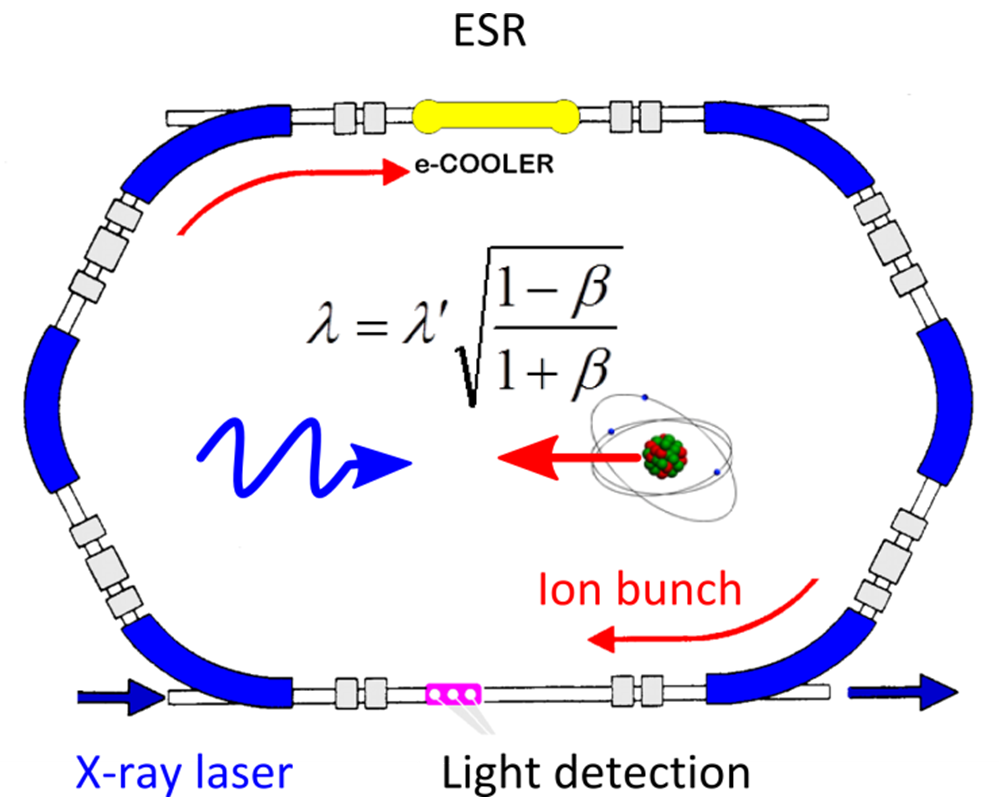X-Ray Laser Spectroscopy
X-ray lasers, with their spectral bandwidth of Δλ/λ = 10-5 and their short wavelength between 7 nm and 25 nm, are the ideal device for high-resolution spectroscopy experiments using highly-charged heavy ions, e.g. lithium-like ions. The experimental approach to parameters such as heavy ion’s charge radius allows for very precise tests of electron correlation effects in QED theories. Since the interaction with relativistic ions in the storage ring is accompanied by a Doppler shift, the fixed wavelength of the X-ray laser can be adapted to the transition energy of the ions through variation of their velocity. The spectral shift towards smaller wavelengths in anti-collinear geometry permits the investigation of transitions in ions with higher atomic numbers, where QED effect are much more pronounced. At the future HESR storage ring at FAIR, this will provide access to spectral lines otherwise not available for investigation.

Novel high photon-flux XUV laser sources for spectroscopy are currently developed at the Helmholtz Institute Jena. These powerful, compact and remote-controlled XUV laser sources are based on fiber-laser technology and high harmonic generation.
These sources will provide photon energies in the range of 20 to 100 eV with sufficient photon flux (up to 1013 photons/s) to effectively excite high-energy transitions in highly charged ions. In combination with the Doppler up-shift in head-on excitation at the maximum energy of the ESR (v=0.73c), for example the s1/2-p1/2 transition for Li-like Silver (Z=47) at ~100 eV can be reached with only 40 eV photons. At HESR the same transition can be excited up to li-like uranium. Currently, the development is focused on reducing the relative energy bandwidth of the XUV laser source to below 10-4. Within the BMBF funding period, a prototype XUV source will be created and delivered to GSI for first experiments that will be conducted at the ESR. A joint collaboration with the Atomic-Physics group at GSI and the groups of Prof. Nörtershäuser and Prof. Weinheimer will design the experimental setup, including suitable fluorescence detector, and conduct the experiments. In future, the XUV Laser source will be employed at the HESR for ground-braking spectroscopic experiments and beam preparation.
Contact: